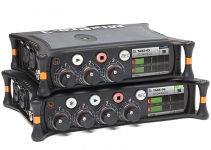The overheating issue of the Sony a6300 is probably the biggest drawback of this otherwise fantastic tiny mirrorless camera that makes many filmmakers so frustrated and disappointed by its performance after shooting 4K video with the camera for some time.
While being on the fence to sold his A6300, San Diego-based broadcast DP Erik Naso decided to try a few workarounds before making the leap. Surprisingly enough, he managed to find a considerable solution that all Sony a6300 videographers might find useful. No, it’s not a dummy battery with an external power solution tethered to it, nor it’s some type of firmware hack. Obviously, it’s a lot simpler than that as well as a lot more effective.
First, Erik Naso tried a dummy battery powered with an external battery pack. Unfortunately, that solution didn’t stop the overheating as the electronics inside the dummy battery continued to heat up the camera from the inside. Another theory he had was that the camera was working really hard down sampling the 6K image to 4K and struggling to write it to the SD Card causing it to get hot. So, he decided to swap the card utilised for recording media with a considerably faster one.
No matter how skeptical this approach might be for you, it actually worked. This test gave Erik Naso over an hour of continuous recording before the camera’s temperature warning came on. He wasn’t able to get more than 15 minutes of continuous recording with his other class 10 U3 SD cards before as the camera iwould overheat and shut down. According to Naso, these results could explain why there are so many differences in terms of performance and overheating issues reported by a6300 users and why some are not having any or much less problems.

As for the SD card utilised for this particular test, it’s the Lexar Professional 2000x 64GB SDXC UHS-II/U3. If you want to learn more about the way Erik Naso conducted the test with his Sony a6300 head over to his blog here. You’ll also find more details regarding the temperature measurements and the exact runtimes. If you already had a chance to test this approach on your own, feel free to share your conclusions in the comments below.
[source: Erik Naso]
B&H Order Links:
Lexar 64GB Professional 2000x UHS-II SDXC Memory Card with SD UHS-II Reader (U3, Class 10)
Sony Alpha a6300 Mirrorless Digital Camera (Body Only)
Amazon US OrderLinks:
Lexar 64GB Professional 2000x UHS-II SDXC Memory Card with SD UHS-II Reader (U3, Class 10)
Sony Alpha a6300 Mirrorless Digital Camera (Body Only)
Disclaimer: As an Amazon Associate partner and participant in B&H and Adorama Affiliate programmes, we earn a small comission from each purchase made through the affiliate links listed above at no additional cost to you.





this should be so obvious. when shooting in higher bit rates of course you would need a faster card
I can’t make sense of why the camera would be working harder with a slower card… Either the card is fast enough to receive the constant stream of video, or it’s not. What am I missing?
I will say, in my personal experience, the a6300 seems to overheat randomly. I’ll test it out over and over again in high temps, and it will be fine. I’ll do an actual shoot, and it will overheat. Or it will be fine. Sometimes it overheats in the cold, sometimes it doesn’t overheat in the heat.
Same with the a7R II.
One variable to consider is the amount of noise in the image. High ISOs might require heavier processing because of the extra noise.
I hear ya Tony. It doesn’t make sense! I’ve racked my brain trying to stop or at least prevent overheating and nothing usable really worked until I decided to try a new fast Lexar 2000X card. I think it has more to do with the new memory chips now than speed. They just don’t get as hot. When I tested the temperature of the cards the Lexar was 8 degrees less than a Transcend. At least in warmer situations this card is making the camera more usable for me.
I have been using that card since the beginning , even the dummy battery, 4K video overheats all the time, useless in real work, We need firmware update
My A6300 is overheating in normal room temperatures (20° C) without any card and without recording. I use it as a livestreaming source via the HDMI Out and it overheats after around two hours. My A5100 I had before ran eight hours in HDMI-Mode without trouble, while recording was much more problematic than on the A6300.